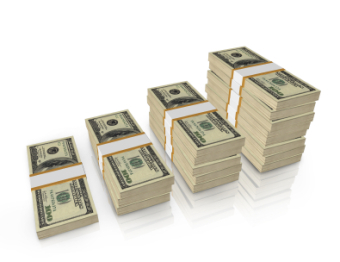Hey Doctor, What's Your Personal Rate Of Inflation?
 I’ve noticed a disturbing trend over the past few years: my gross income has declined but my workload has increased.
I’ve noticed a disturbing trend over the past few years: my gross income has declined but my workload has increased.
I make less per patient and per hour now than I did over five years ago. Whether the reason is malpractice premiums, flat insurance payments, inability to increase fees and collect them, or corporate practice of medicine, one thing is certain: I’m not alone. According to the Medical Group Management Association, in 2006, physicians in my specialty reported a compensation increase of just 2.7%, compared with the inflation rate of 3.2%. We all know why we are feeling the squeeze but the question is, what can we do about it?
Inflation is a general rise in the price of goods and services in the economy. It results in a loss of purchasing power if income fails to keep up with inflation since each dollar of income will buy less of a good or service than it did previously. Inflation is usually measured by the Consumer Price Index (CPI), which reflects the weighted average price of a basket of goods and services consumed by the average household. From 1926-2010 inflation has increased at an average rate of about 3% annually. However, there have been periods such as the 1970s and early 1980s when inflation increased by over 10% annually.
Personal rate of inflation
It should be noted that these numbers deal with averages; a more appropriate measure of inflation for an individual is the personal rate of inflation. Inflation affects individuals differently depending on individual income, geographic location, consumption of specific goods and services, and allocation to various investments. For example, a married physician living in New York City with two college aged children may be more sensitive to inflation due to higher housing costs, heating costs, and education costs than a single physician living in the rural Midwest with no children. The only way to determine your personal rate of inflation is to accurately measure your yearly personal expenditures and compare that with your yearly income.
6 STRATEGIES FOR FIGHTING INFLATION
Work more, faster
Simply put, if your personal rate of inflation exceeds your rise in income, you can always work faster, see more patients, do more procedures, or work more shifts. For incentive-based physicians, seeing more patients per hour not only increases gross income but it also increases pay-per-hour. However, at some point you reach a limit to the number of patients you see per hour, and you increase the risk of making mistakes leading to possible malpractice lawsuits. Similarly, there comes a point where the number of days or shifts you work compromises your lifestyle.
Budget living
A second way to address the inflation gap is to reduce your personal expenses by adhering to a budget. After all, do you really need heated car seats when you live in Florida? Do you need to finish the basement on your 5000 square foot house when you have no children and face $100,000 in student loans? Of course some expenses are fixed, such as mortgage payments, insurance premiums, and child care expenses for which expense reduction is nearly impossible.
Real returns
The third option is to generate inflation-beating returns (known as real returns) from your investments. The goal is to preserve an investment portfolio’s purchasing power so that future liabilities, which increase at the rate of inflation, can be adequately met by an equal or greater increase in assets. Due to the compounding effects of inflation, there is a greater erosion of purchasing power as the time horizon lengthens. Assuming a 3% inflation rate, your purchasing power declines by over half in 25 years, which is well within an individual’s investment timeframe. With just a slight increase to 4%, it declines by nearly two-thirds. In other words, it would take twice as many dollars in 25 years to purchase the same goods and services as it would today assuming average inflation, and almost three times as many dollars assuming inflation rate is 4%.
Next time I’ll talk about some investment strategies to beat inflation.





 1 Comment
1 Comment
Reader Comments (1)
I fully subscribe to the "invest to beat inflation" bit, and yet must disagree with the other 2 items.
Spending less is not fighting inflation, it is simply yielding to it.
Working more - this is going to be counter intuitive, but also a fallacy.
You work more - productivity drops off due to fatigue - higher tax bracket snags more of your money - you make less per unit time than before.
Solution - work less, higher productivity due to less fatigue - keep more of your money due to smaller tax bracket. Of course, this works much better when phased in as your investments grow and can throw off some cash...